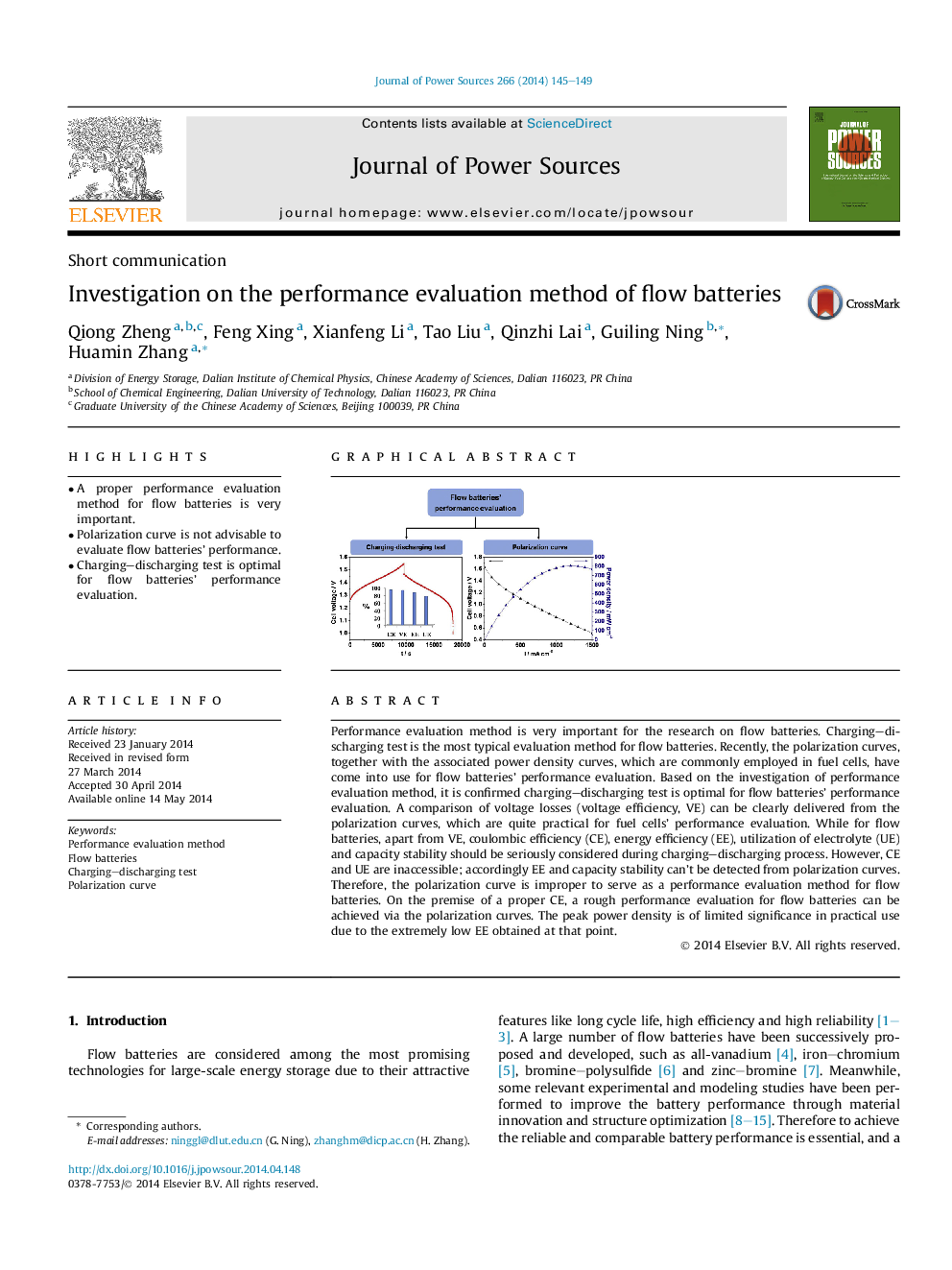| Article ID | Journal | Published Year | Pages | File Type |
|---|---|---|---|---|
| 1286769 | Journal of Power Sources | 2014 | 5 Pages |
•A proper performance evaluation method for flow batteries is very important.•Polarization curve is not advisable to evaluate flow batteries' performance.•Charging–discharging test is optimal for flow batteries' performance evaluation.
Performance evaluation method is very important for the research on flow batteries. Charging–discharging test is the most typical evaluation method for flow batteries. Recently, the polarization curves, together with the associated power density curves, which are commonly employed in fuel cells, have come into use for flow batteries' performance evaluation. Based on the investigation of performance evaluation method, it is confirmed charging–discharging test is optimal for flow batteries' performance evaluation. A comparison of voltage losses (voltage efficiency, VE) can be clearly delivered from the polarization curves, which are quite practical for fuel cells' performance evaluation. While for flow batteries, apart from VE, coulombic efficiency (CE), energy efficiency (EE), utilization of electrolyte (UE) and capacity stability should be seriously considered during charging–discharging process. However, CE and UE are inaccessible; accordingly EE and capacity stability can't be detected from polarization curves. Therefore, the polarization curve is improper to serve as a performance evaluation method for flow batteries. On the premise of a proper CE, a rough performance evaluation for flow batteries can be achieved via the polarization curves. The peak power density is of limited significance in practical use due to the extremely low EE obtained at that point.
Graphical abstractFigure optionsDownload full-size imageDownload as PowerPoint slide
